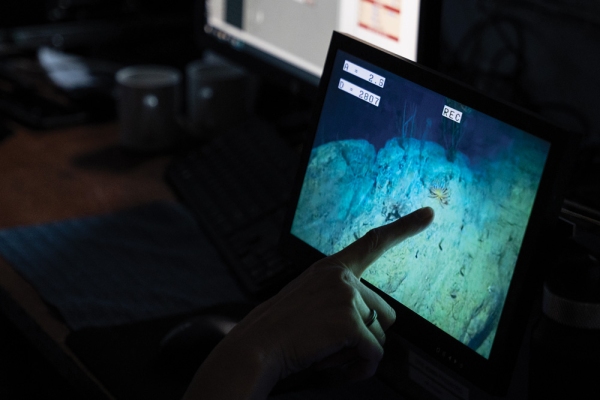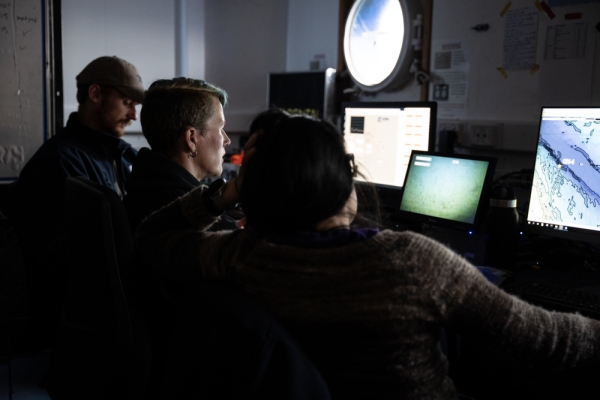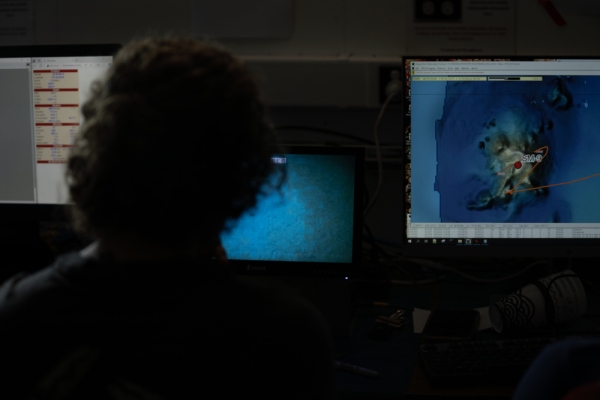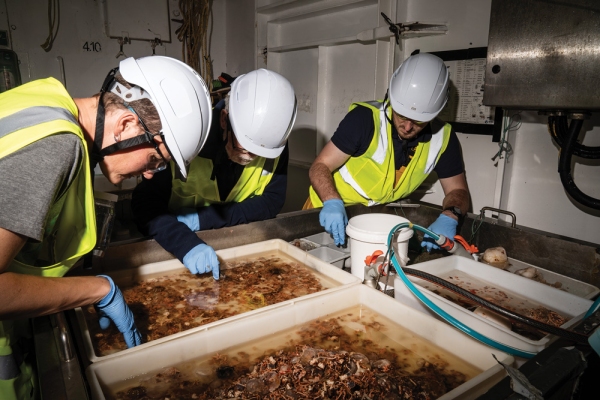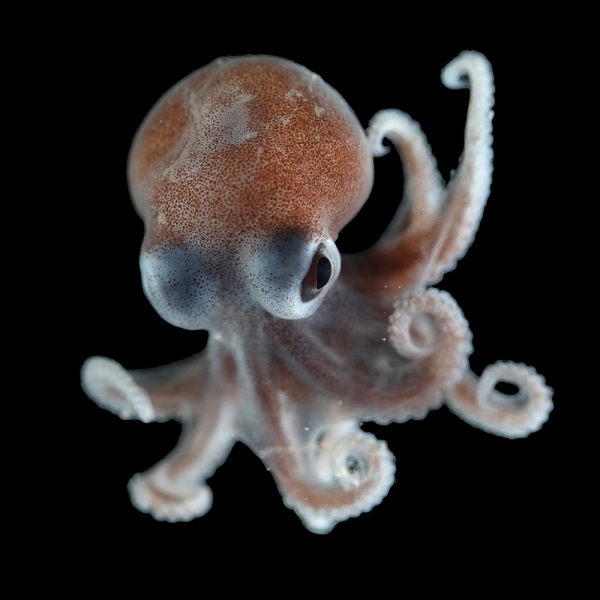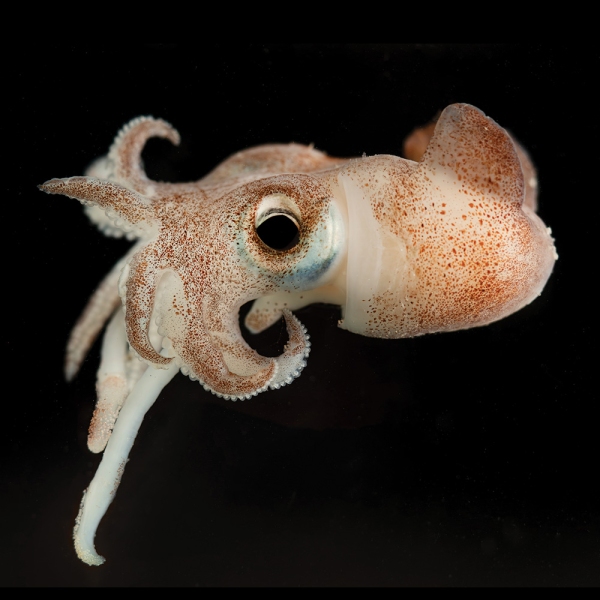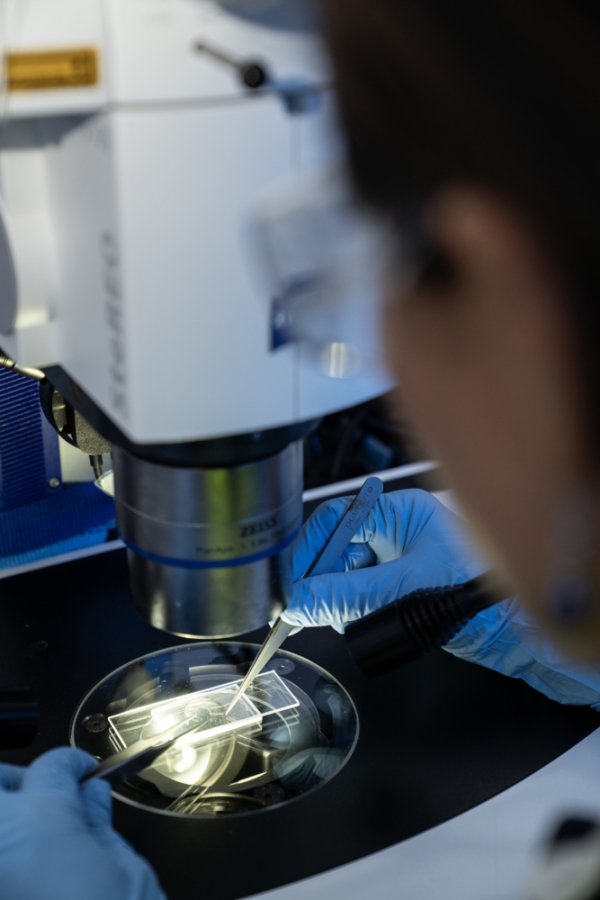Ryan Willoughby investigates what it takes to discover and accurately describe life at the darkest depths of the sea.
NIWA’s research vessel Tangaroa sits quietly off the east coast of the South Island, almost 5km above the largely unexplored seabed of the Bounty Trough.
Onboard, a group of scientists huddle around a small monitor, watching the vessel’s Deep Towed Imaging System steadily descend into the ocean darkness. The research camera platform finally reaches the seafloor, 4,808m below – the deepest it has ever gone. The room erupts in cheers. As the light adjusts, the scientists are rewarded with images of a whole new world of seafloor creatures and habitats, never seen before.
The scientists are part of the Ocean Census NIWA Bounty Trough Expedition. Ocean Census is a global alliance, launched by Japan’s Nippon Foundation and the United Kingdom’s Nekton organisation. Its goal is to accelerate the discovery and protection of ocean life.
The Bounty Trough expedition is Ocean Census’ first mission in the Southern Hemisphere, and the research team are nearing the end of a highly successful voyage of deepsea discovery.
Over the past three weeks, the 37-strong team of both local and international marine specialists, plus crew, has launched a range of deepwater research equipment from Tangaroa, including cameras, corers, seabed landers and nets.
Thousands of new samples recovered from the ocean depths are now sitting in Tangaroa’s storage, awaiting accurate identification in laboratories back on shore.
On their return to Wellington, the team are joined by a second wave of specialists, again both local and international, for a series of taxonomic workshops at NIWA and the Museum of New Zealand Te Papa Tongarewa.
Their shared mission is to sort through the 1,800 samples and to precisely describe the fish, invertebrate and geological specimens collected, so they can be added to the picture of New Zealand’s marine biodiversity.
This highly detailed and specialised work will likely continue for decades, but is vital marine science if New Zealand is to understand the complex web of life that lies at the bottom of our oceans.
Already over one hundred new, or potentially new, ocean species have been identified. These range from fish to snails, to corals and sea cucumbers, including some creatures so small they can barely be seen with the naked eye.
New specimens will be physically stored in either the NIWA Invertebrate Collection or Te Papa, and the knowledge gathered will be combined into future editions of NIWA’s New Zealand Marine Biota Biodiversity Memoir.
was recovered about 1km down on the Bounty Trough seafloor. These tiny
creatures bury themselves in the seabed mud, emerging at night to feed.
Voyage co-leader NIWA marine biologist Sadie Mills says the deepsea is the largest ecosystem on the planet and we need to make the most of every opportunity to explore it.
She says it is rare to be involved in missions, like the Ocean Census expedition, which are solely focused on biodiversity discovery and identification.
”A voyage is only meaningful if it is also backed up by the identification and taxonomic description work onshore.
“The expertise we have been able to pull together on this voyage is unparalleled, and not just within NIWA, but all the other organisations we’ve been able to work with.
“Discovering new species requires collaboration with partners across the world who lend their expertise. We couldn’t achieve half the things we do without those strong global networks.
It is a sentiment shared by the Ocean Census science director Professor Alex Rogers who describes the Ocean Census NIWA Bounty Trough Expedition as a truly collaborative mission.
“The partnership with NIWA and Te Papa, along with the crew on Tangaroa, has led to a transformative change in our understanding of this remote part of the ocean and the species that live within it.
“It leaves a fantastic legacy for the people of New Zealand.”
Mills is also excited by what the voyage has achieved, but she cannot resist a strong plea for continuing to nurture the taxonomists who underpin such expeditions around the world.
“Globally we have a major problem. Experienced taxonomists are ageing and want to hand over to the next generation.
“We need the commitment to supporting more voyages like this, and to nurturing the specialists they require, if we are going to grow that generation.”
Read more about the Ocean Census – Bounty Trough research voyage.

